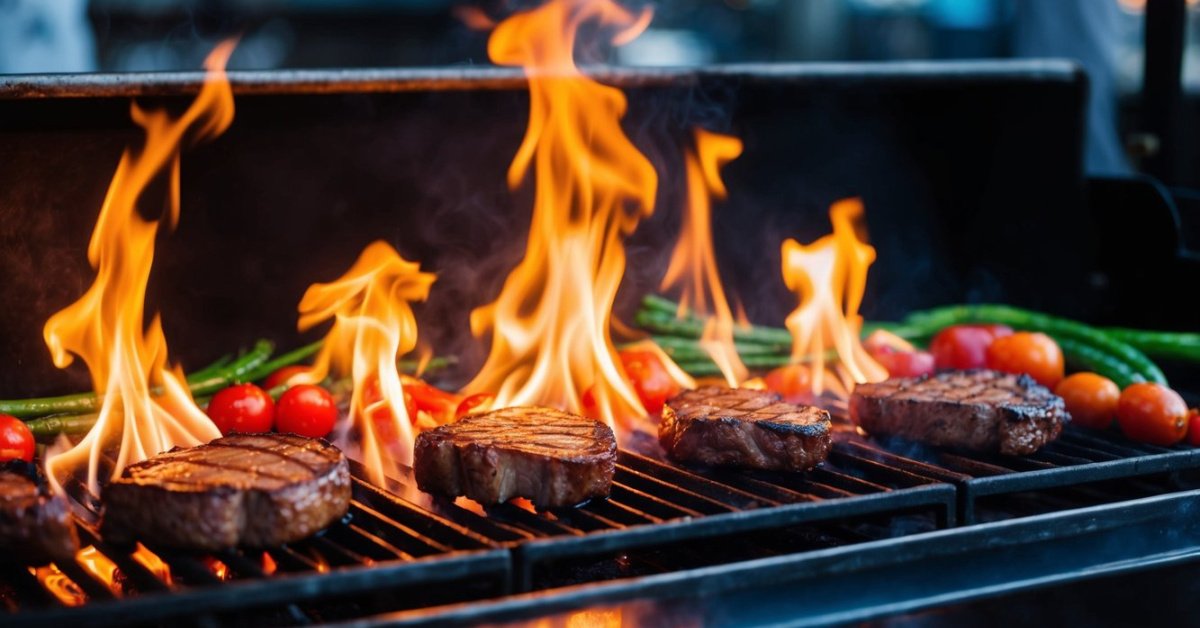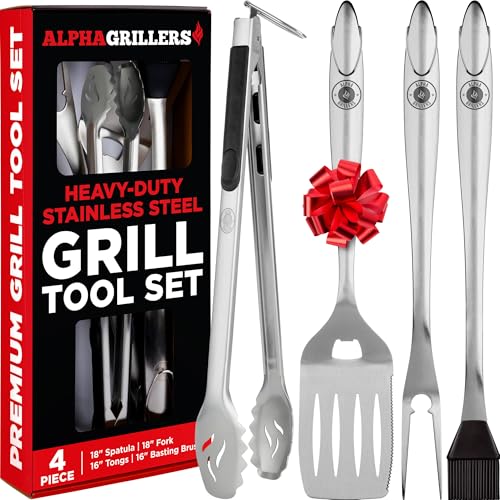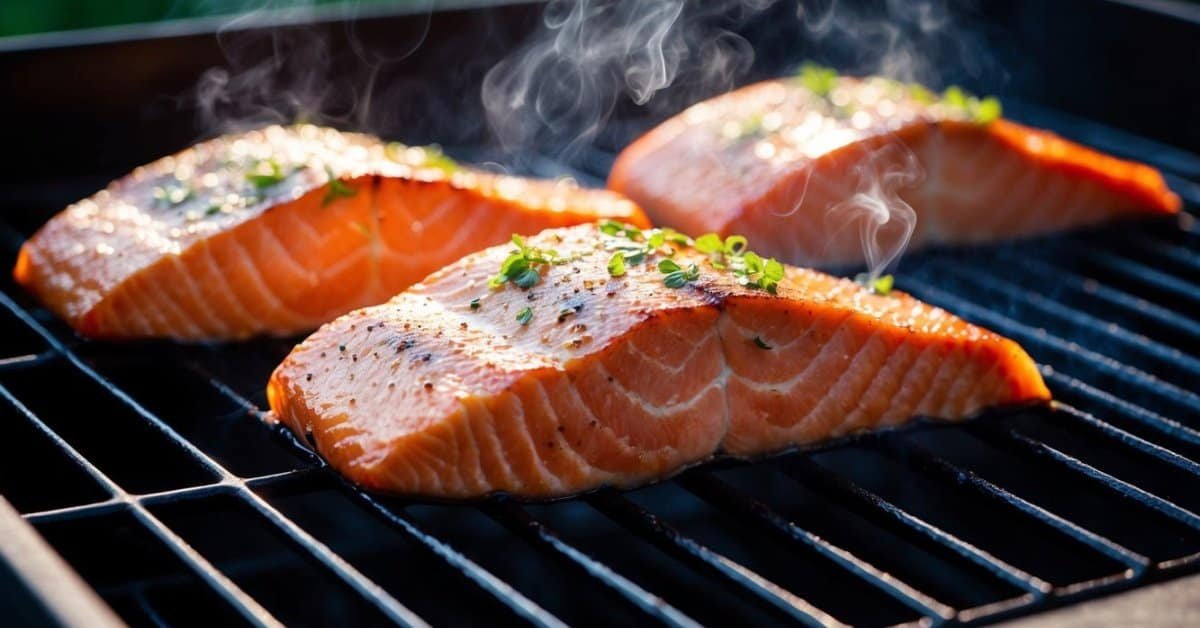You’ve fired up your grill after months of storage, only to find those grates covered in rust. It happens to the best of us, but don’t worry—I’ve got you covered. In this article, I’ll walk you through simple steps to bring your grill grates back to life.

Cleaning rusty grates doesn’t have to be a chore. With the right tools and a bit of elbow grease, you can make your grill shine like new again. Let’s dive into the best methods to deep clean those stubborn rust spots.
Understanding Rust On Grill Grates
Rust forms on grill grates when iron reacts with oxygen and moisture, a process called oxidation. I notice this commonly after grills are stored for extended periods, especially in humid environments. High heat from regular grilling accelerates rust formation, weakening the grates over time.
Several factors contribute to rust on grill grates:
- Moisture Exposure: Rain, dew, and even high humidity levels provide the necessary water for oxidation.
- Heat Cycles: Repeated heating and cooling can wear down protective coatings, making grates more susceptible to rust.
- Storage Conditions: Keeping grills in damp or unprotected areas increases the likelihood of rust development.
- Material Quality: Lower-grade metals lack the corrosion resistance needed to prevent rust effectively.
Understanding these factors helps in preventing rust and maintaining grill grates. Regular maintenance and proper storage can significantly extend the life of your grill.
Common Types of Rust on Grill Grates
| Type of Rust | Description |
|---|---|
| Surface Rust | Thin, flaky layers that appear on the grate’s surface. Easy to remove with basic cleaning. |
| Pitted Rust | Deep, crater-like holes that form due to prolonged exposure. Requires more intensive cleaning or replacement. |
| Galvanic Rust | Occurs when different metals interact, accelerating corrosion. Prevented by using compatible materials. |
By identifying the type of rust on your grill grates, I can choose the most effective cleaning method to restore them.
Effects of Rust on Grilling Performance
Rust impacts grilling in several ways:
- Flavor Transfer: Rust particles can mix with food, affecting taste and safety.
- Heat Distribution: Corroded grates may heat unevenly, leading to inconsistent cooking.
- Structural Integrity: Severe rust weakens grates, increasing the risk of breakage during use.
Recognizing these effects motivates me to address rust promptly, ensuring a better grilling experience and prolonging the lifespan of my grill.
Tools And Materials Needed
Gather all necessary tools and materials to efficiently deep clean your rusty grill grates.
Safety Precautions
- Wear gloves to protect your hands from rust and cleaning agents.
- Ensure the grill is cool before starting the cleaning process.
- Work in a well-ventilated area to avoid inhaling fumes.
- Disconnect the propane tank or remove charcoal prior to cleaning.
Cleaning Supplies
- Grill brush or wire brush for scrubbing grates
- Baking soda to help remove rust and stains
- White vinegar for breaking down rust
- Dish soap to degrease the grates
- Scrub pad or sponge for applying cleaning solutions
- Plastic scraper to gently remove stubborn rust
- Bucket for mixing cleaning solutions
Step-By-Step Cleaning Process
Cleaning your rusty grill grates involves three main steps: removing loose rust, scrubbing the grates, and rinsing and drying them thoroughly.
Removing Loose Rust
Start by using a stiff grill brush to scrape off any loose rust particles. Focus on areas with visible corrosion, applying firm pressure to dislodge debris. If necessary, use a plastic scraper to reach stubborn spots without damaging the grates.
Scrubbing The Grates
Prepare a cleaning solution by mixing equal parts white vinegar and water in a bucket. Dip a scrub pad into the solution and scrub each grate thoroughly, targeting pitted and surface rust. For tough rust stains, sprinkle baking soda onto the grates before scrubbing to enhance the cleaning power.
Rinsing And Drying
After scrubbing, rinse the grates with clean water to remove any remaining cleaning solution and rust residue. Use a hose or a bucket of water for effective rinsing. Once rinsed, dry the grates completely with a clean cloth or let them air dry in a well-ventilated area to prevent new rust from forming.
Preventing Future Rust
Preventing rust on grill grates ensures longevity and optimal performance. Implement these strategies to keep your grates rust-free:
- Store grates properly: Keep grates in a dry, covered area when not in use to minimize moisture exposure.
- Apply protective coatings: Lightly oil grates after cleaning to create a barrier against moisture and oxygen.
- Use grill covers: Cover the entire grill to shield it from rain, humidity, and other environmental factors.
- Maintain regular cleaning: Clean grates after each use to remove food particles and prevent rust formation.
- Control moisture exposure: Avoid leaving the grill in damp conditions and ensure it dries completely after washing.
- Inspect regularly: Check grates for early signs of rust and address them promptly to prevent extensive corrosion.
Implementing these measures effectively reduces the risk of rust development, maintaining your grill’s quality and performance over time.
Alternative Cleaning Methods
When traditional methods aren’t enough, I explore alternative cleaning techniques to tackle stubborn rust on grill grates.
Using Baking Soda and Vinegar
A powerful duo, baking soda and vinegar effectively break down rust.
- Create a Paste: Mix 1 cup of baking soda with enough water to form a thick paste.
- Apply the Paste: Spread the mixture evenly over the rusty areas.
- Add Vinegar: Pour white vinegar over the paste, causing a fizzy reaction.
- Let It Sit: Allow the solution to work for 30 minutes.
- Scrub and Rinse: Use a scrub pad to remove loosened rust, then rinse thoroughly with water.
Employing Aluminum Foil
Aluminum foil serves as an efficient abrasive tool for rust removal.
- Prepare the Foil: Crumple a piece of aluminum foil into a ball.
- Scrub the Grates: Use the foil to scrub the rusty surfaces, applying firm pressure.
- Rinse and Dry: Remove residue with water and dry the grates completely.
Utilizing Coca-Cola
Coca-Cola’s acidity helps dissolve rust naturally.

| Step | Action |
|---|---|
| Soak the Grates | Submerge grates in a container filled with Coca-Cola for several hours. |
| Scrub the Rust | Remove and scrub with a grill brush or steel wool. |
| Rinse and Dry | Wash off the soda and dry thoroughly to prevent new rust. |
Applying Commercial Rust Removers
« Fire Safety Gear Every Griller Needs for a Safe and Enjoyable Cookout
How to Grill Artichokes with Lemon Aioli: Easy and Delicious Recipe »
For severe rust, commercial rust removers provide a strong solution.
- Select a Product: Choose a rust remover like Naval Jelly or Rust-Oleum.
- Follow Instructions: Apply the remover according to the manufacturer’s guidelines.
- Wear Protection: Use gloves and ensure proper ventilation during application.
- Scrub and Rinse: After the remover acts, scrub the grates and rinse thoroughly with water.
Using a Power Drill with a Brush Attachment
Power tools speed up the rust removal process.
- Attach the Brush: Secure a wire brush attachment to a power drill.
- Scrub the Grates: Run the drill over the rusty areas, applying consistent pressure.
- Inspect and Repeat: Check for remaining rust and repeat the process if necessary.
- Rinse and Dry: Clean off debris with water and dry the grates to prevent new rust.
Implementing Phosphoric Acid Solutions
Phosphoric acid converts rust into a paintable surface.
- Prepare the Solution: Dilute phosphoric acid according to product instructions.
- Apply Carefully: Use a brush to coat the rusty grates with the solution.
- Allow to React: Let the acid sit until the rust changes color, indicating conversion.
- Scrub and Rinse: Remove the treated rust with a brush and rinse the grates thoroughly.
- Dry Completely: Ensure the grates are fully dry to avoid future rusting.
By incorporating these alternative cleaning methods, I ensure that even the most stubborn rust can be effectively removed, restoring grill grates to their optimal condition.
Conclusion
Seeing my grill grates come back to life was incredibly rewarding. It’s amazing how a bit of effort and the right tools can make all the difference.
Now grilling feels better than ever with clean grates that ensure great flavors every time. Taking these steps not only improves your grilling experience but also extends the life of your grill.
I’m excited to keep my grill in top shape and enjoy many more delicious barbecues ahead.















